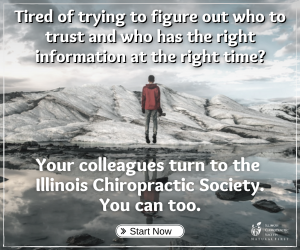
Do This One Thing to Improve Your Documentation
Dr. Evan Gwilliam, SVP with Practisync (an ICS-owned company), covers an easy way to improve your notes.
Transcript:
Hey there I am Dr. Evan Gwilliam. I’m the senior vice president of Practisync, which is a management services organization that does stuff like your billing. But I’m also a chiropractor, I’m a certified professional coder, Certified Professional Medical auditor. One of the things I get to do for fun on the side is I get to review records of doctors who are in trouble, and they’ve been asked to pay back a bunch of money in recoupment because they did something poorly. They didn’t document something, they left something out.
I most recently was working on a case was $119,000, which this office was asked to pay back. And I wanted to give you guys the number one thing, if they did only one thing, what would make the biggest difference, what one thing could they do to improve their records, that would protect them from these types of recoupment that you can employ in your office right away and make the biggest difference in your records. One thing, if you do nothing else, this one thing I believe will have the biggest, biggest impact. Are you ready, get your pens out, paper, whatever. Its goals, its goals, the biggest weakness I see in chiropractic records, the biggest reason we lose in those fights against medical necessity and, having to pay back is goals.
So here’s what you got to do. Here’s what I would like you to do in your records to make them stronger. The patient comes in, they got complaints, you say what they are right, their back hurts, their neck hurts, they can’t do this, they can’t do that. Ask them what keeps them from doing so what is it you can do that you really want to and they say I can’t sleep, I can’t walk, I can’t sit at my desk, I can’t drive my truck, I can’t go fishing. I can’t play with my kids, I can’t do my laundry, what is the thing they can’t do that they want to do? One of the ways you can find this out real easy. If you haven’t filled out an outcome assessment questionnaire, and you see how to answer those questions. You can use the questionnaires, and numbers as well. But what I really want to do is appeal on an emotional level, I want the goal to be related to what they want to do with their lives that they can do because of their complaints. Their neck is killing them, their back is killing them, but they can’t sleep through the night, they can’t play with their children on the floor.
That’s what you should do at the beginning of care. The first visit, you say I’m going to provide care to this patient, to help them be able to play with their grandkids, again, to help them sleep through the night, to help them sit in their truck as we’re driving across the country. That’s what it is, pick one of those things that the patient says they can’t do and assign a number to it. So it can be measured, the number could be distance, it could be time, it could be they want to be able to sleep this many hours through the night, it could be that they want to be able to walk a certain distance, right or lift a certain amount of weight, give it a number, any number, and say I’m going to treat the patient for four weeks. And in four weeks, I hope to be able to get them to sleep this long, or walk this far, or sit this long, whatever the number is the new number. And that’s why you’re giving the care. So you explain why goals explain why you’re giving the patient care, you do that. And then at four weeks, you say well, I hope to get eight hours a night, they’re only to six, so I’m going to treat him for another four weeks because I think it’s going to take four more weeks to get them another two hours or whatever it is. So do four-week trial periods of care. Set a goal that has a number on it that’s functional a functional goal. And update that goal and talk about it explaining how your care helped them get there and how more care may be needed to get them further. If that’s all there, that is the number one thing you can do to support your care, provide medical necessity for whatever services are delivering as long as they help accomplish that goal. That is the number one thing that you could do in your notes tomorrow to make them stronger, better, more defensible, and do a better job of communicating with your patients about what you’re doing to help them.
It’s not about reducing pain, or increasing range of motion. I mean it is but that’s actually secondary. The number one thing is what function are they going to get back they had lost because of their complaints. If you can do that, I promise you, your notes will be easier to defend, you’re less likely to have to pay back a recoupment to have a payer and you’re just gonna do a better job as a clinician. So that is the number one quickest, biggest difference you can make in your records is to make better goals. Right? Get Started do that right away.

















